Kalina: description, varieties, planting and care
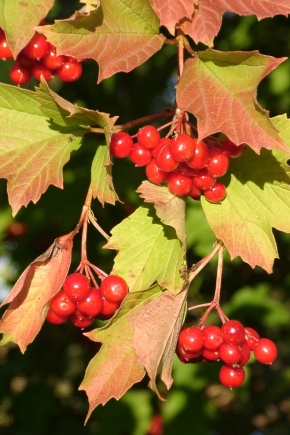
Viburnum is an unpretentious perennial culture, often found in domestic gardens. It is customary to refer to its indisputable advantages as winter hardiness, endurance, undemanding care and the ability to maintain an attractive appearance throughout the growing season. Consider what else are remarkable representatives of this genus, what types and varieties of viburnum are popular among gardeners, how to grow a crop and care for it.
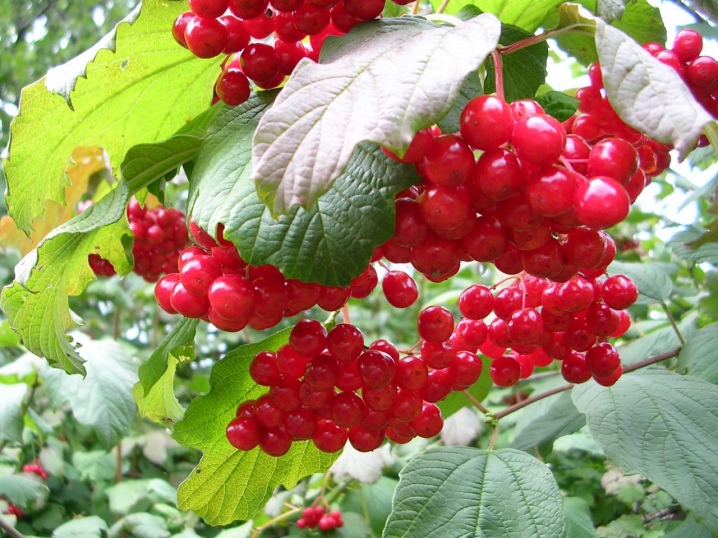
Peculiarities
This genus includes perennial deciduous and evergreen plants of the adox family, common in countries of the temperate climatic zone. The genus has about 170 representatives, differing from each other both in morphological characteristics and in the requirements for growing conditions.

A significant part of the species included in the viburnum genus are shade-tolerant, moisture-loving shrubs or trees, reaching 1.5-4 meters in height. Plants have strong, upward shoots covered with grayish-brown, yellow-brown or reddish-gray bark.
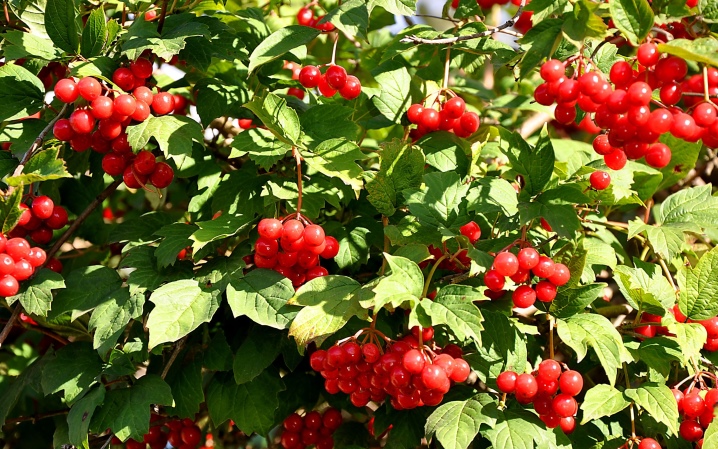
Depending on the characteristics of their species, plants can have whole or notched, smooth or embossed leaves with smooth or serrated edges. The surface of the leaf plates can be smooth or pubescent.
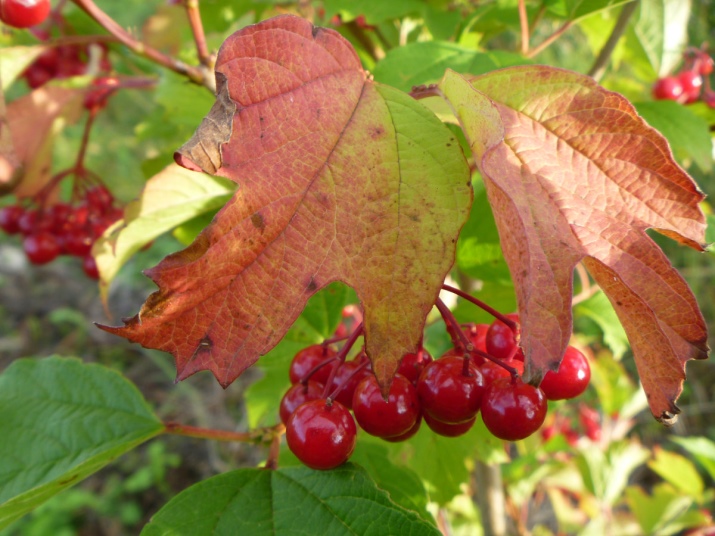
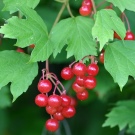
Most species enter the flowering phase in late spring or early summer. During this period, the plants form numerous umbellate, paniculate or corymbose inflorescences, consisting of fruit-forming and sterile flowers. The average size of the inflorescences varies from 5 to 11 centimeters. The color of the inflorescences can be milky white, white-pink, white-green.
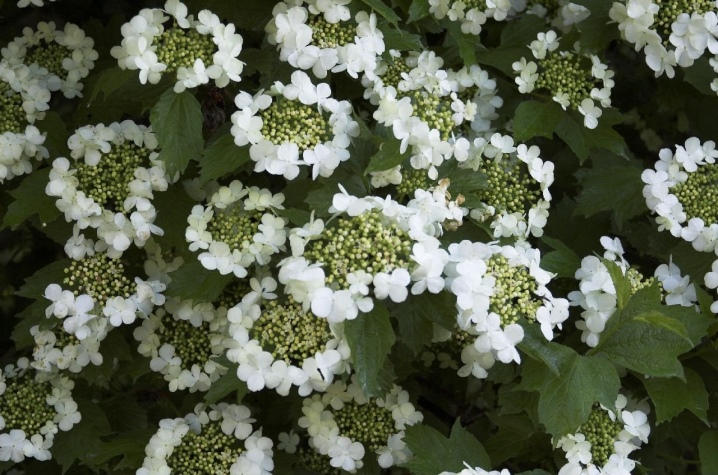
Fruit-forming flowers - small, inconspicuous, located in the central part of the inflorescence. Sterile flowers - large, located along the edge of the inflorescence. Viburnum flowers have a specific, bitter-tart aroma that attracts pollinating insects. The flowering time can range from 1.5 to 4 weeks.

In most species, fruits ripen in late summer or early autumn. Viburnum fruits are round or oval juicy drupes, collected in numerous clusters. Depending on the species characteristics of the plant, the fruits can have a sweet or bitter-tart taste, black, dark blue or scarlet color. Fruits are harvested after they are fully ripe (August - October). It should be remembered that in some species the fruits are not edible.
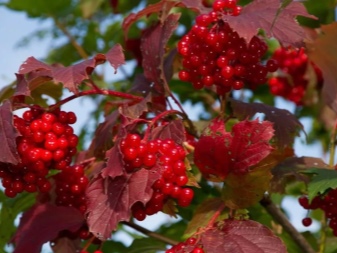
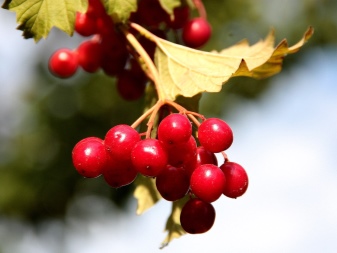
The root system of plants is well-branched, extending about 40-50 centimeters deep into the ground. In most species, the area of distribution of roots in the soil rarely exceeds the diameter of the crown.
In private gardening, many types and varieties of viburnum are widespread, due to their endurance and unpretentiousness. Representatives of this genus usually do not require increased attention to themselves, they grow quickly, they endure summer drought and winter frosts.
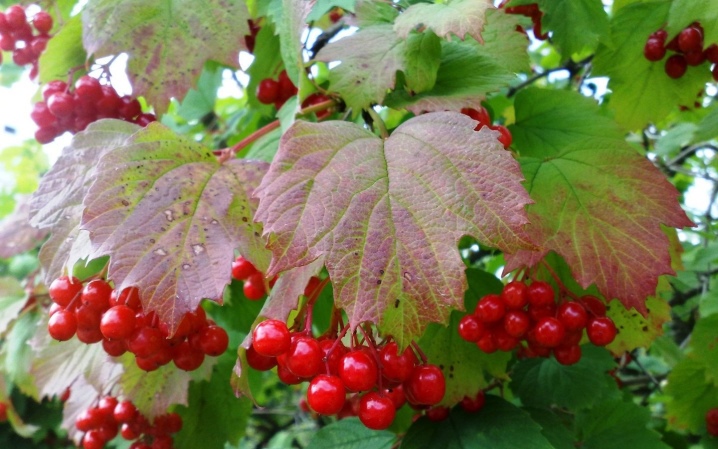
Both during the flowering period and during the ripening of the fruits, viburnum bushes look very attractive. Many homeowners leave clusters of berries on the bushes for the winter, using them as a natural decorative garden decoration.

Types and varieties
In gardening and landscape design, both wild varieties of viburnum and its cultural forms and varieties bred by breeders are popular. In the course of many years of scientific work, specialists managed to obtain a number of highly decorative varieties of viburnum, resistant to unfavorable weather and climatic conditions. These varieties can be safely grown even in the northern regions of Russia with a harsh climate.

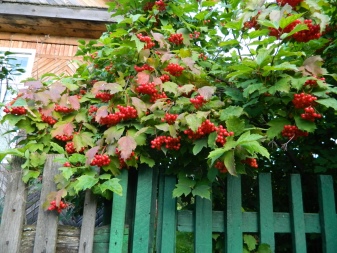
Below are descriptions of the most popular species and varieties that can adequately decorate any personal plot.
- Bureinskaya viburnum - a wild species of representatives of the viburnum genus, found in the Far East, northeastern China and North Korea. The plant is a sturdy, spreading shrub reaching 2.5-3 meters in height. Shoots - strong, numerous, covered with grayish-yellow bark. Leaves are solid, ovoid, with jagged edges. Inflorescences are corymbose, creamy white in color. The fruits are edible, sweet, black.
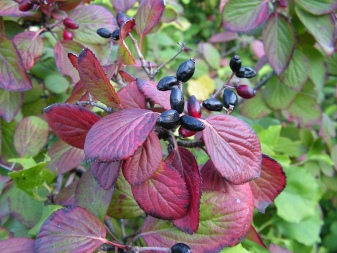
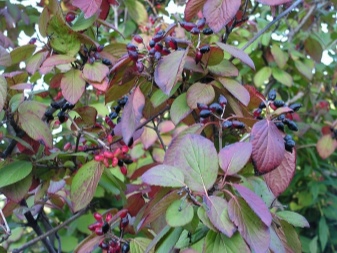
- Common viburnum - the most popular species found in Europe and Asia. In Russia, it is found mainly in Western and Eastern Siberia. It is a powerful, sprawling shrub (less often a tree) with a height of 1.4 to 3 meters or more. Shoots are firm, smooth or embossed, yellow-gray or gray-brown in color. Leaves 3- or 5-lobed, rich green, pubescent. At the end of the growing season, the leaves turn burgundy red. Inflorescences are white or pinkish-white umbrellas, reaching 6-7 centimeters in diameter. The fruits are scarlet, edible, with a tart taste with a slight bitterness.
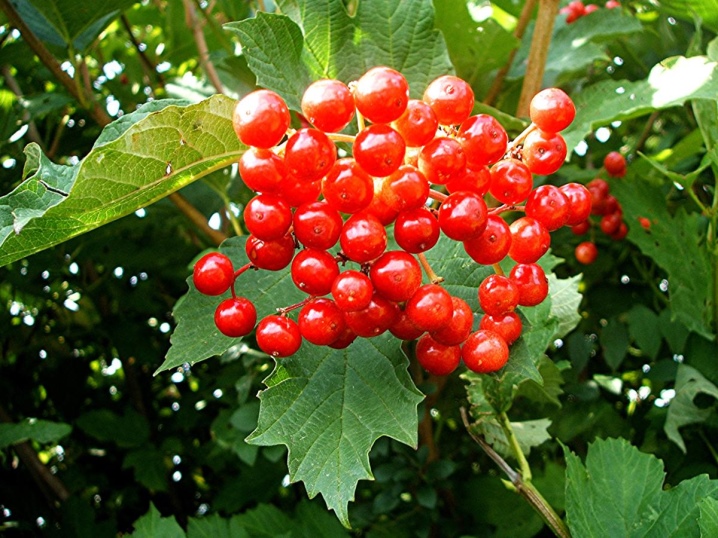
- Gordovina ordinary - a kind of black-fruited viburnum, the natural habitat of which is the territory of Southern and Central Europe. It is a strong, tall shrub or tree (5-6 meters high) with a dense and lush crown. The trunk and branches are covered with gray-brown or gray-green bark. The leaves are rounded, with a pointed top, reaching 7-10 centimeters in length. Inflorescences are creamy white umbrellas about 10 centimeters long. Fruits are edible, black in color. The species is considered highly decorative, unpretentious, shade-tolerant.
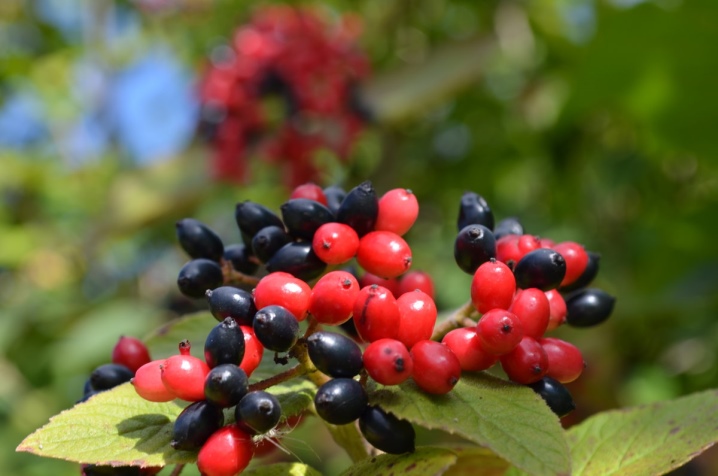
- "Compactum" - a very attractive, undersized variety found in domestic gardens. The plant forms a low (up to 1.5 m) bush with a compact crown. Leaves are pale green, 3- or 5-lobed. The flowering period is late spring or early summer. Inflorescences are small umbrellas of snow-white color. The fruits are scarlet drupes up to 1 centimeter in size. In autumn, the leaves take on a spectacular orange-burgundy or deep purple color. The variety is characterized by frost resistance and shade tolerance.
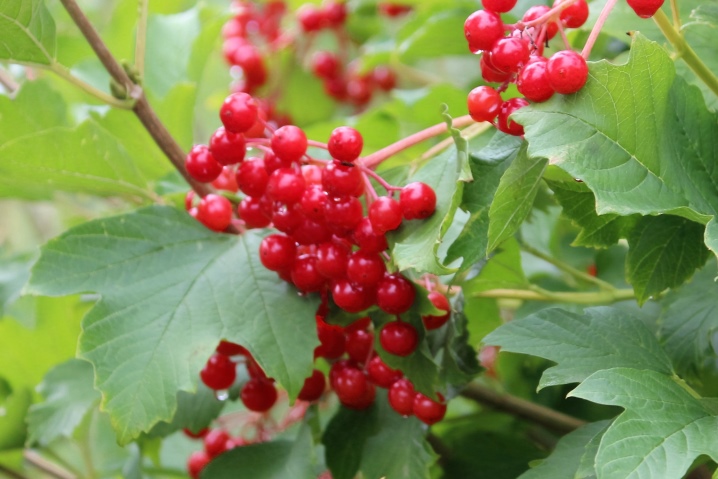
- "Xanthocarpum" - an original, highly decorative variety of yellow-fruited ordinary viburnum. The plant forms a small tree or bush up to 1.3-1.5 meters high. Shoots are firm, gray-brown or brown-red, covered with pale green toothed leaves. The color of the foliage does not change with the arrival of autumn. During the flowering period, the plant forms many neat white umbrellas. Fruits are small, globular drupes of golden yellow color.
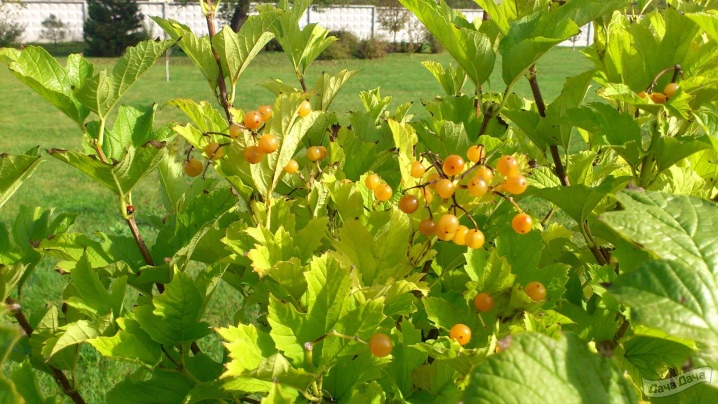
- "Red coral" - a winter-hardy high-yielding variety of Viburnum vulgaris, bred by domestic breeders. The plant is a medium-sized (1, 2 meters), moderately spreading bush with many red-brown or gray-brown shoots. Leaves are pale green, 3- or 5-lobed. Inflorescences are pinkish-white or snow-white, fragrant, corymbose. Fruits are spherical, large, with a pleasant sweetish taste, practically without bitter notes.
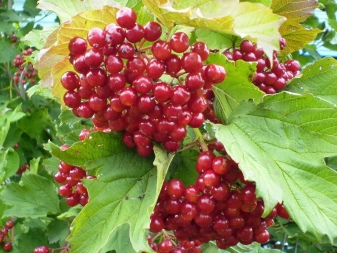
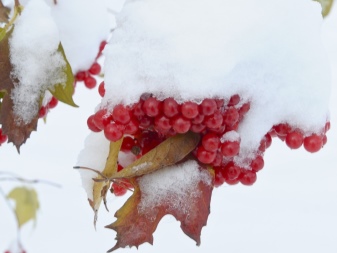
- "Pink beauty" - a very effective, medium-sized variety of folded viburnum, which is popular among gardeners and landscape designers. The average height of the bush reaches 1.5 meters, the crown diameter is 2-2.5 meters. The flowering time of this variety falls on May-June.At this time, the plant forms numerous compact inflorescences of an umbrella or corymbose shape. Initially, the flowers are white, which is later replaced by pink. The leaves are large, ovate, reaching 8-10 centimeters in length. In autumn, the leaves of the viburnum of this variety acquire a rich purple color. The fruits initially have a bright red color, which is later replaced by a dark ink color.

Differences from elderberry
Visually, the viburnum has a certain similarity with another member of the adox family - elderberry. Despite the fact that both plants belong to the same family, they belong to different genera.
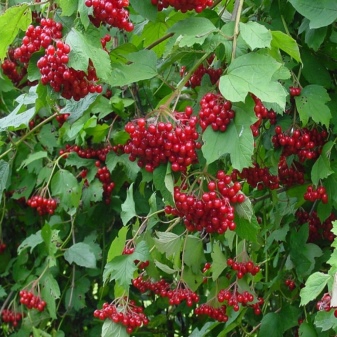
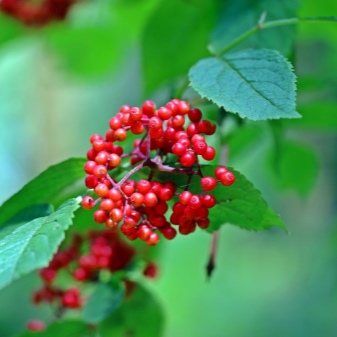
You can distinguish viburnum from elderberry by the shape of the leaves. In most species of viburnum, they are ovoid, round or lobed. Elderberry leaves, in turn, have an elongated, lanceolate shape, giving them a resemblance to rowan leaves. In addition, elderberry leaves give off a rather unpleasant, repulsive scent. Viburnum leaves are odorless.
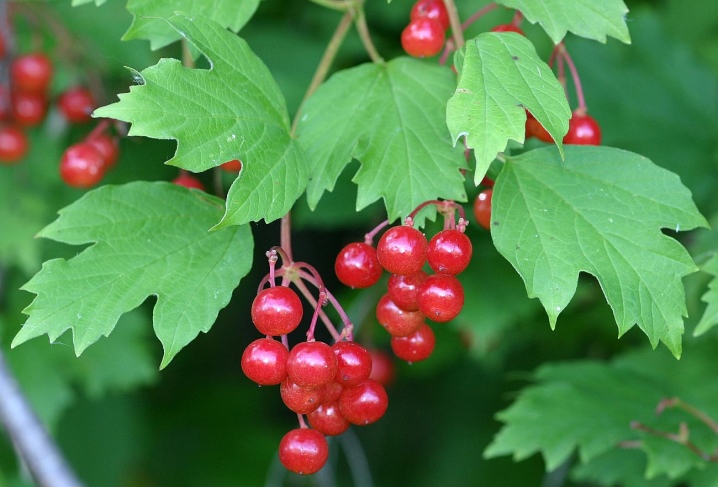
These plants differ among themselves and the size of the inflorescences. In viburnum, they usually do not exceed 10-12 centimeters, while elderberry inflorescences can reach 20-25 centimeters or more.
Viburnum can be distinguished from elderberry by the shape of the inflorescences. So, in viburnum, they have an umbrella or umbrella-shield-like shape. The inflorescences of the red elderberry, in turn, are elongated elliptical or cone-shaped panicles. Inflorescences of black elderberry are multiflorous, very lush, large and flat scutes, hanging after flowering.
The shape of the fruit bunches of these plants also differs. So, viburnum clusters, like inflorescences, usually have a corymbose or umbrella shape. In an elderberry, clusters of ripe berries are more like bunches of grapes.
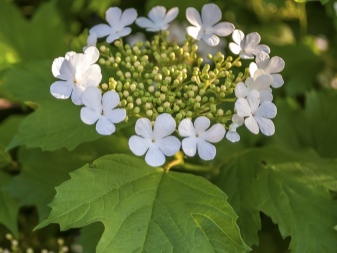
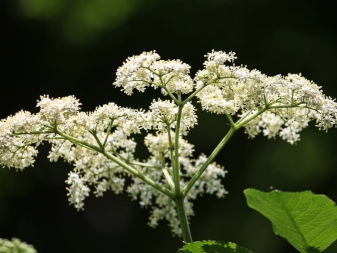
Disembarkation rules
When planning to plant viburnum seedlings in the country, it is necessary to select a suitable place for them in advance and determine the most favorable time for the procedure.
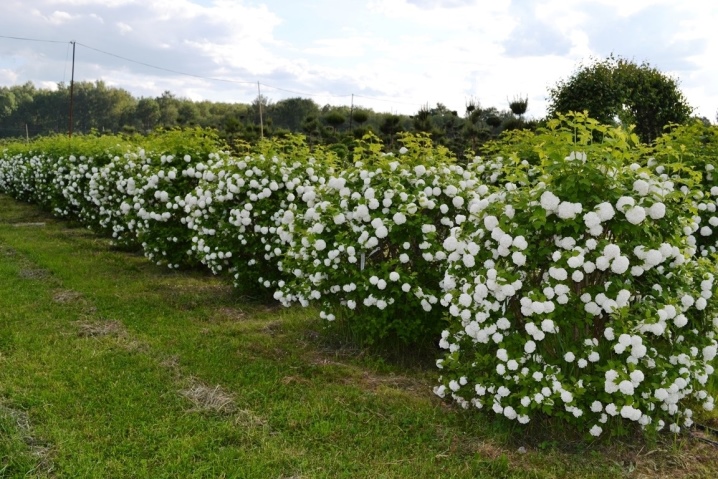
Optimal timing
It is allowed to plant young plants in open ground before and after the growing season (in spring and autumn). The spring planting is carried out before the leaves begin to develop in the seedlings, the autumn planting is carried out before the onset of frost.
Optimal terms:
- for spring planting - late April, early May;
- for autumn planting - September.
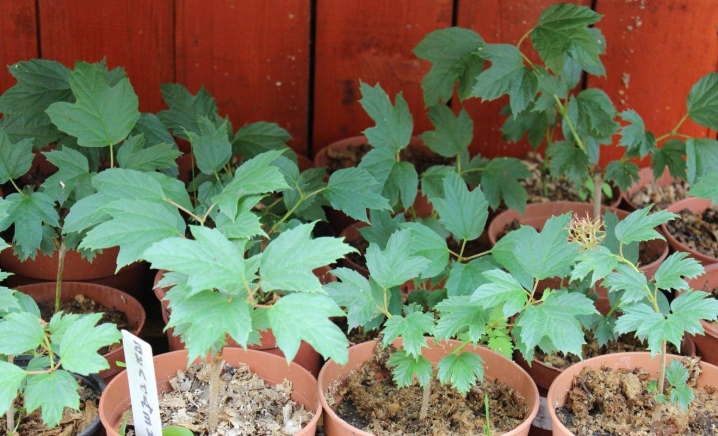
Seat selection
Viburnum prefers to grow in well-lit places with neutral or slightly acidic soil. It is allowed to plant it in the shade, but in this case the plant will bloom and bear fruit less abundantly.
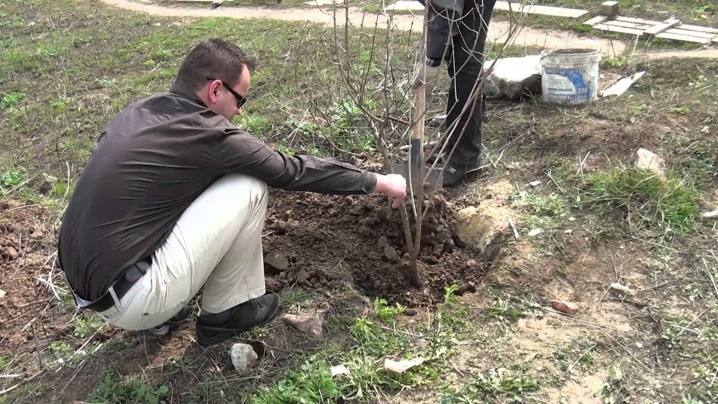
It is strongly discouraged to plant viburnum in areas with high groundwater levels and in lowlands. Stagnant water can be detrimental to this crop.
A month before planting, the selected area should be dug up, cleaned of stones, debris, weeds. It is advisable to dilute too heavy soils with a mixture of sand and peat.
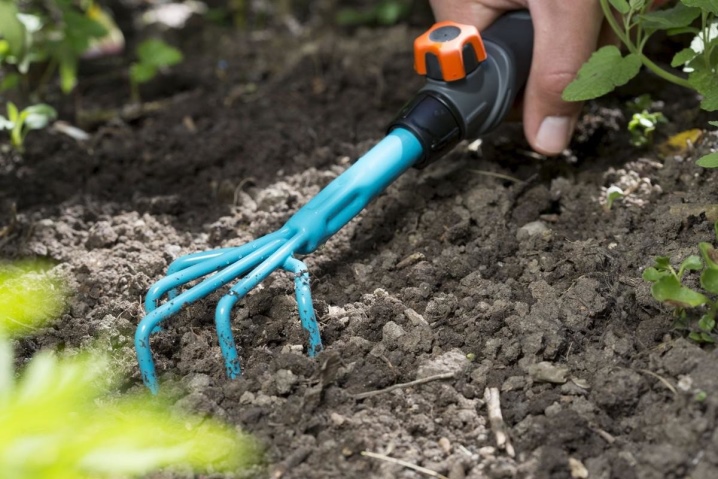
Instructions
Preliminarily, planting pits with a size of 50x50 centimeters are equipped on the selected site. The recommended depth of the holes is 50-60 centimeters. The distance between the landing holes should be at least 2.5-3 meters.
The holes should be filled with a light nutritious soil mixture prepared in advance from deciduous humus, river sand, garden soil and peat. It is advisable to add a small amount of potassium-phosphorus fertilizers to the resulting mixture.
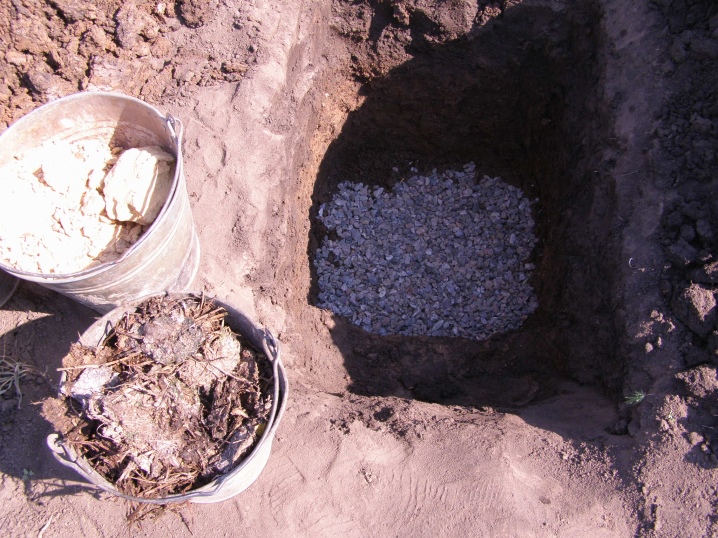
Young bushes are planted as follows:
- a little soil mixture is poured into the planting pit, a hill is formed from it;
- a seedling is placed in the hole, keeping it in an upright position;
- gently spread the roots of the plant, distributing them over the surface of the earthen hill;
- fill the pit with soil mixture;
- carefully tamp the surface of the earth around the bush.
After planting, the young bush is watered with settled water, trying to wet the soil to a depth of 30-40 centimeters. At the end of watering, the soil in the near-trunk circle is sprinkled with mulch.
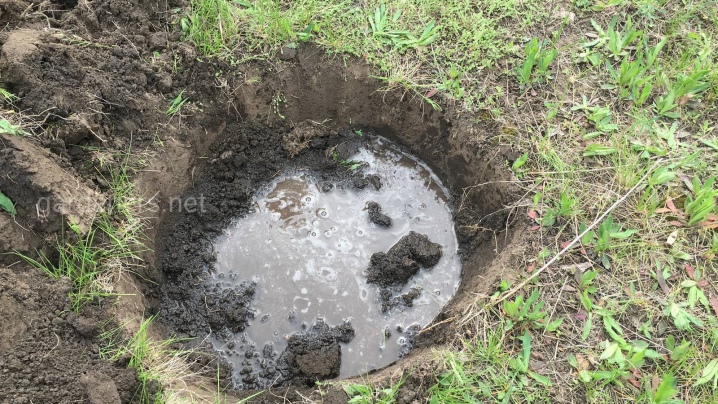
How to take care of it properly?
Viburnum belongs to unpretentious plants that do not require specific care. The main procedures that this beautifully flowering crop needs are watering, feeding and periodic pruning.
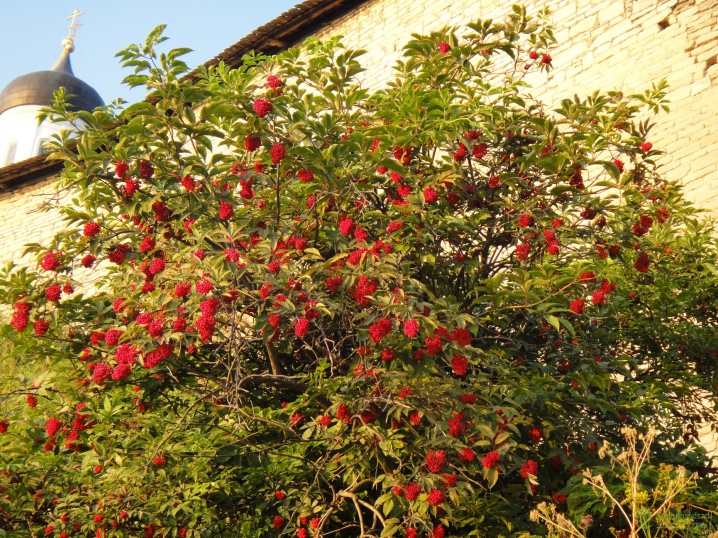
Watering
Viburnum is a moisture-loving plant that prefers timely watering. In hot and dry weather, it is recommended to water the bushes once every 3-4 days. In cool, damp or cloudy weather, the intervals between watering should be increased to 6-8 days.
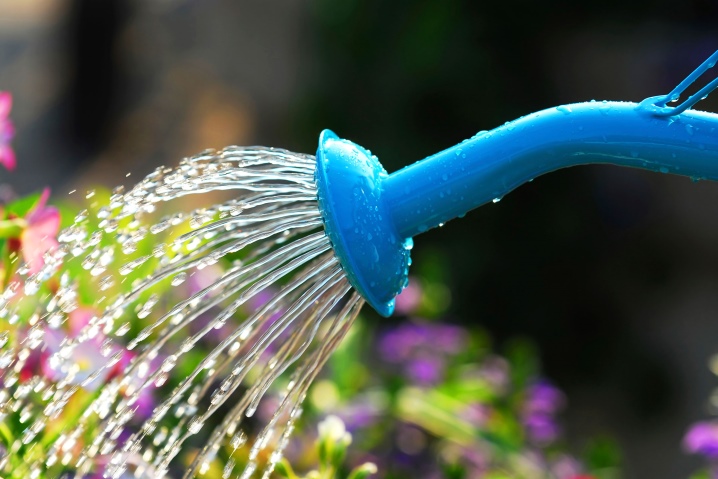
Recommended water consumption rate:
- for young plants (under 5 years old) - 1-1.5 buckets per bush;
- for adult plants (over 5 years old) - 2-3 buckets per bush.
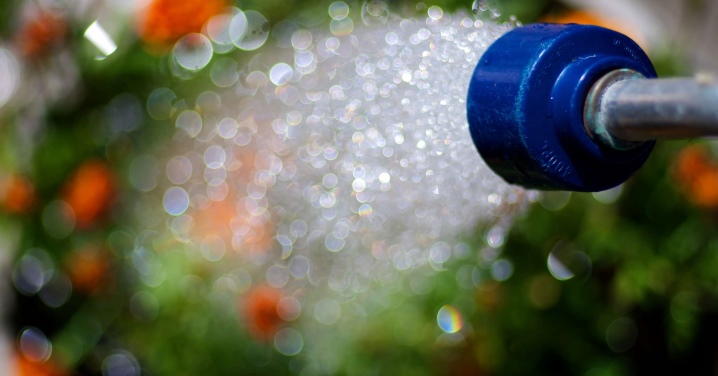
Top dressing
At the beginning of the growing season, viburnum bushes need nitrogen-containing dressings, which contribute to an intensive build-up of green mass. As a top dressing, gardeners usually use urea, which is applied in the amount of two tablespoons under each bush.
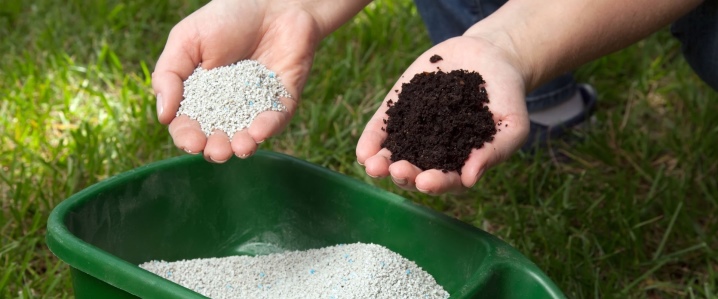
Before the beginning of the flowering phase, the plants are fed a second time. At this stage, potassium-phosphorus fertilizers are used, which contribute to the active formation of flower ovaries. Potassium sulfate can be used as a fertilizer.

When the bushes have completely faded, they should be fed a third time. At this stage, it is recommended to add a little nitroammophoska under each bush.

The final feeding is carried out in the process of preparing the plants for winter. In this case, gardeners usually use potash-phosphorus complexes.
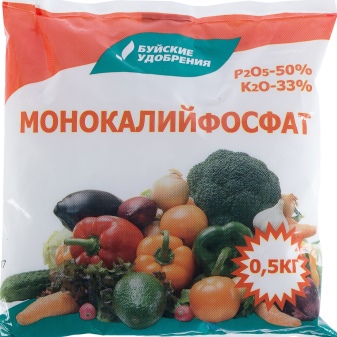

Pruning
Experienced breeders advise pruning viburnum bushes at the end of winter or early spring (before the start of the sap flow phase). During pruning, dried, unnecessarily long, crooked, deformed and diseased branches are removed with a sharp pruner.
Once every 7-10 years, it is recommended to radically prune the bush. This procedure allows you to completely renew the plant, to stimulate the growth of young and strong shoots. During such pruning, all old stems are shortened to a height of 10-15 centimeters, leaving several young growths with buds.
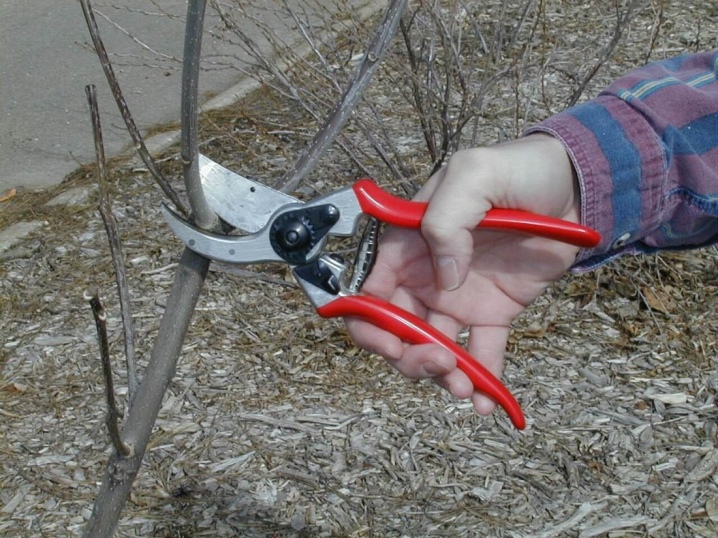
After some time, new young shoots will develop from the buds.
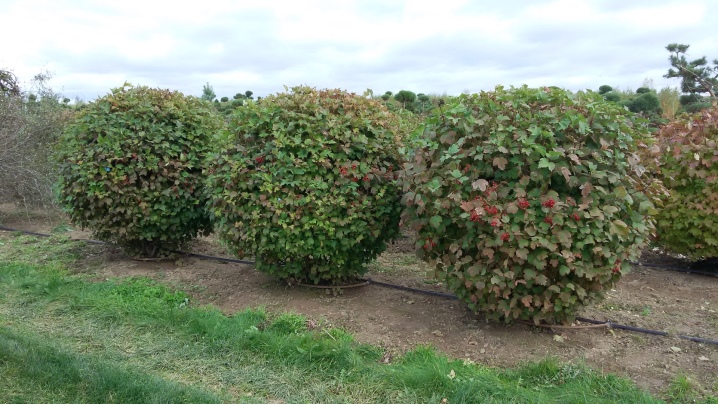
You can rejuvenate the bush in several stages. To do this, in the fall, a third of the old trunks and branches are cut out from the bush, leaving young shoots to replace them. The second third of the old part of the bush is removed next fall. In the third year, the remainder of the old branches and trunks is cut out, thereby completely renewing the bush.

Reproduction methods
These flowering perennial shrubs are usually propagated by cuttings, root shoots and seeds. Seed propagation is considered the least efficient and most time consuming. Vegetative methods are usually referred to as the simplest and most effective.
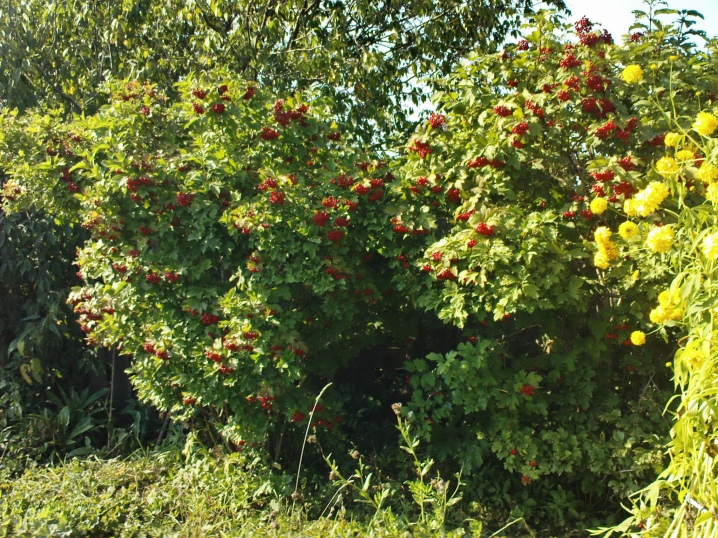
Cuttings
Cuttings are harvested in June, cutting them from healthy shoots. Each stalk must have at least two nodes. The lower cut of the cutting is performed along an oblique line.
Prepared cuttings are placed for 10 hours in a glass with a solution of a root stimulator. Then they are planted in containers filled with a peat-sand mixture, at a slight angle, buried in the ground by 1.5-2 centimeters. The planted cuttings are covered with a transparent cap.
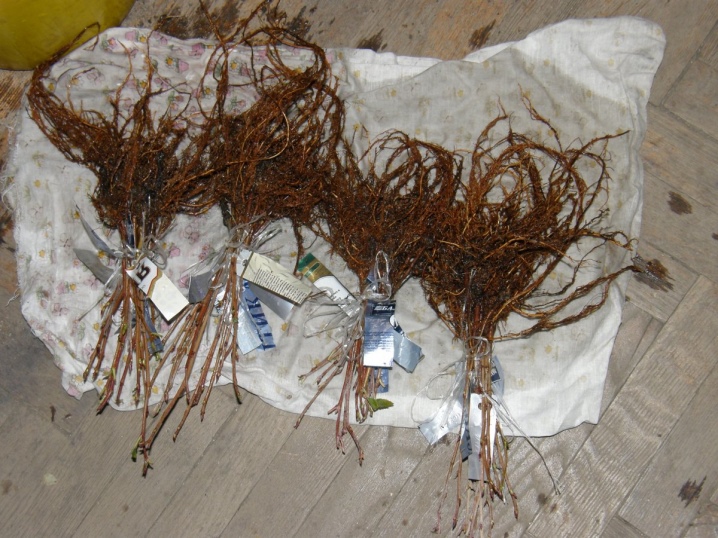
Every day, the greenhouse with planting material should be ventilated by removing condensation from the walls of the container. During airing, the cuttings are sprayed from a spray bottle, making sure that the soil surface in the greenhouse remains moist. Cuttings take root after about 3-4 weeks. Young plants are planted in open ground in spring.

Root shoots
To get a young viburnum bush in this way, it is necessary at the end of spring to select the strongest basal processes extending from the mother plant. The height of the shoots must be at least 20 centimeters.
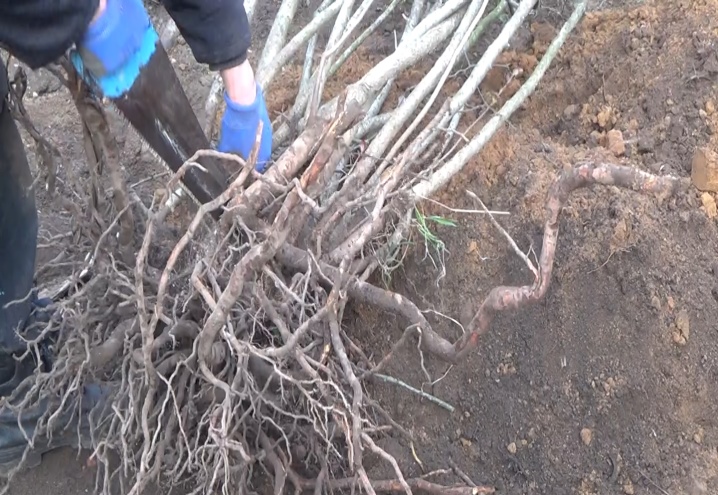
The selected processes at the base are pulled together with a strong tourniquet, after which they are covered with earth to a height of 7-8 centimeters. After hilling, the shoot is watered.During the summer, the process is sprinkled with earth on all sides several more times, raising its level to a height of 15 centimeters. In the spring of next year, the rooted shoots with young shoots are cut off from the parent bush and transplanted.
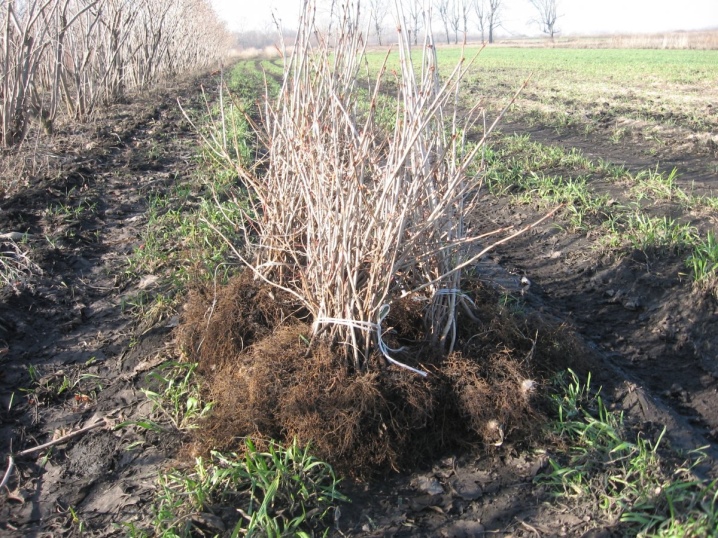
Seeds
Before sowing, viburnum seeds are stratified by storing them in a box with wet sawdust or sand for 8 weeks at room temperature. The box is then placed in the refrigerator for another 1 month.
After stratification, the seeds are sown in containers with a light moist substrate. When sowing, the seeds are buried in the soil by 1-2 centimeters.
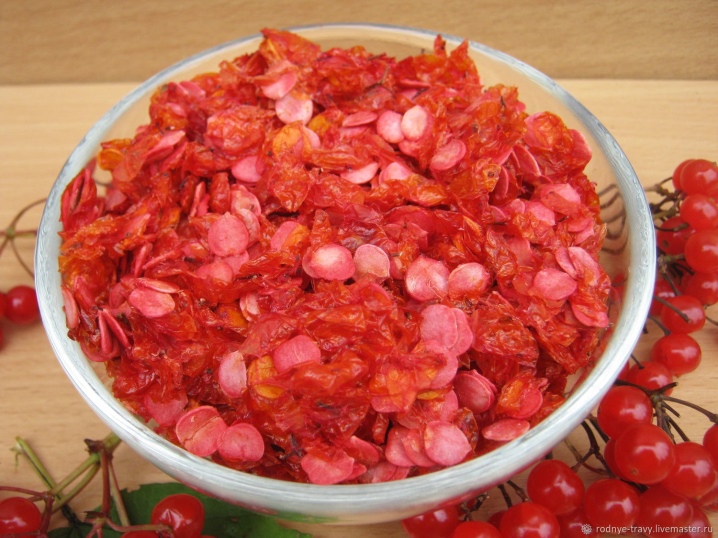
The emergence of the first shoots occurs very slowly (over several weeks). When the seedlings have a pair of true leaves, they are dived into separate pots. Strengthened and grown plants are planted in open ground for the 3-4th year.
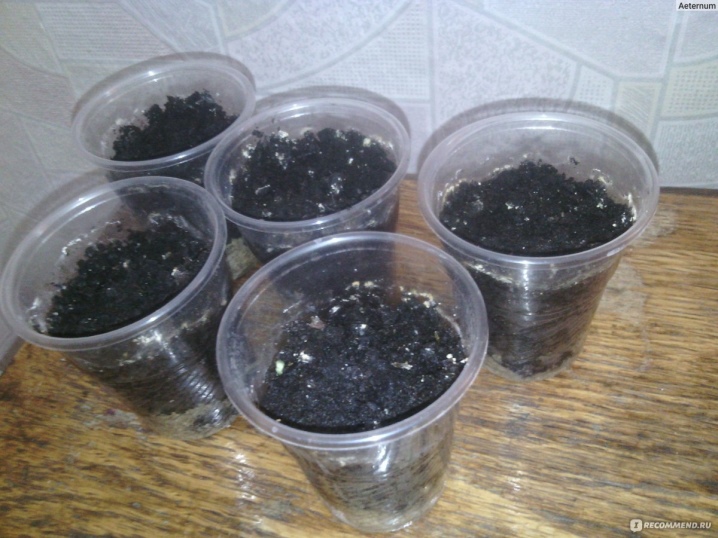
Diseases and pests
Violations of the irrigation regime, thickening of the bushes often lead to the development of powdery mildew. This disease is indicated by the appearance of white-gray spots on the leaves of the viburnum, which turn brown over time. The disease can be eliminated by treating the plant with fungicides (Fundazol, Topaz).
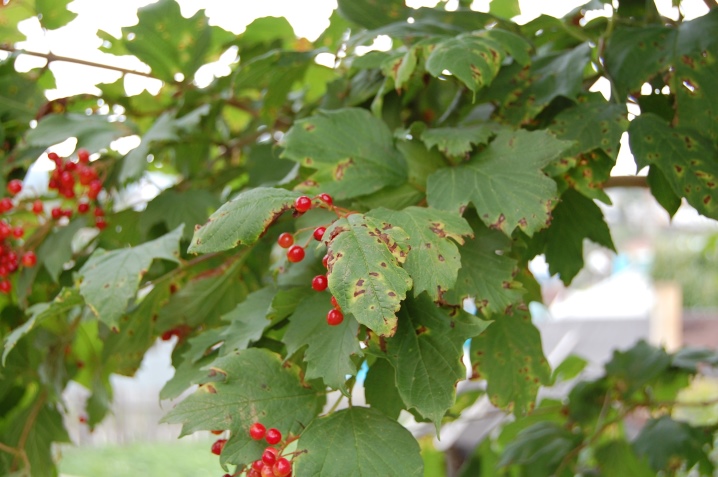
In rainy and cold summers, viburnum bushes can suffer from gray rot. With this disease, small dark brown spots form on the leaves of plants, which eventually become covered with a dirty gray bloom.
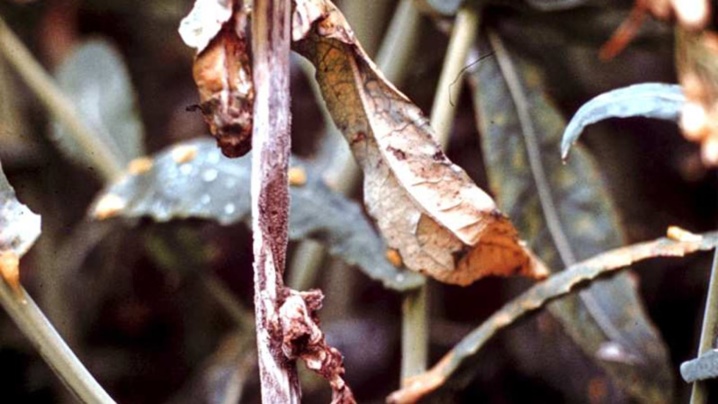
Treatment of the disease involves the destruction of the affected parts of the plant and treatment with any antifungal drugs.
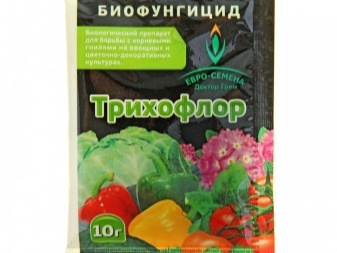

One of the worst enemies of these flowering perennials is the viburnum leaf beetle. The larvae of this parasite completely devour the leaves of plants, leaving thin veins from them. You can get rid of the pest with the help of insecticidal agents ("Fufanon").

Use in landscape design
In landscape design, various types and varieties of viburnum are used to create bright group and single plantings. These perennials look organically both surrounded by high and medium-sized plants, and in combination with dwarf representatives of the world of ornamental flora.

Planting viburnum with decorative conifers looks organic - thuja, juniper, microbiota. It also successfully combines with flowering perennials - irises, roses, lilacs, hydrangeas.
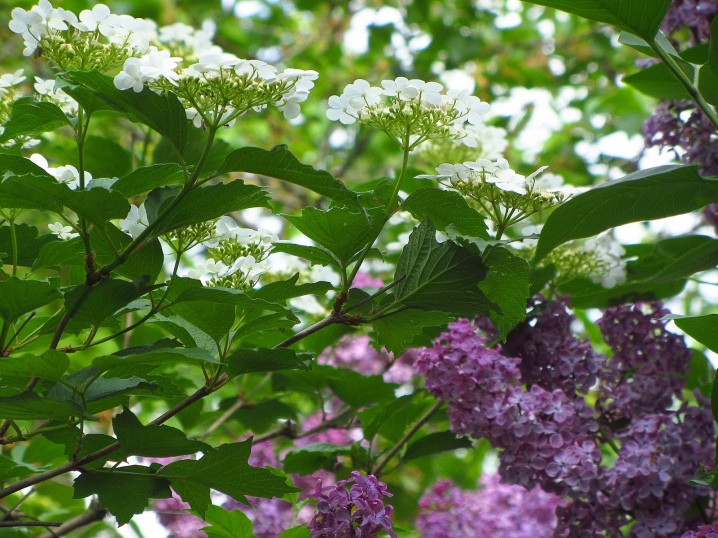
Viburnum bushes are ideal for setting up eye-catching hedges. With their help, you can not only mark the boundaries of the site, but also zone the backyard area, decorate the voids and unsightly corners of the garden.
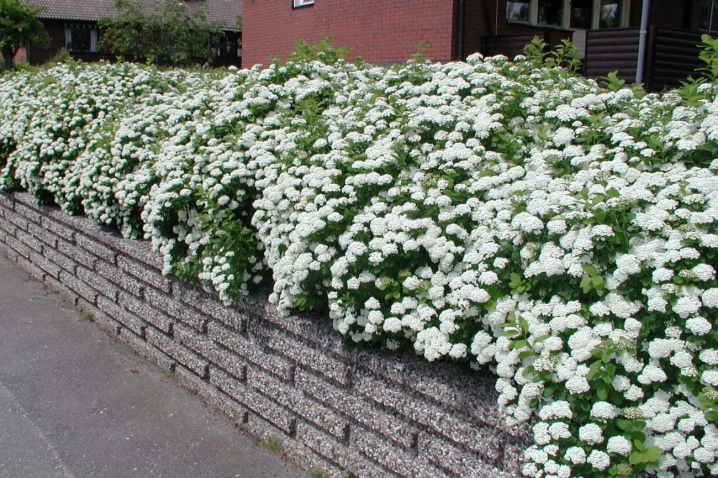
It should be noted that viburnum has the least compatibility with fruit trees. So, it is not recommended to plant it with apple trees, nuts, pears and sea buckthorn.
You can learn more about the features of viburnum in the video below.



































































The comment was sent successfully.